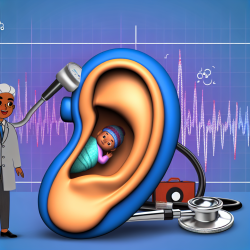As a speech-language pathologist, continually enhancing your skills and knowledge is crucial to creating the best outcomes for the children you work with. A recent study titled Motor Reeducation in Birth Injuries: A Case Report offers valuable insights that can be applied in your practice. This blog will discuss key findings from the study and provide actionable steps to implement these outcomes, thereby improving your therapeutic interventions.
Understanding Motor Reeducation
Motor reeducation refers to the process of retraining the motor system to perform movements that were impaired due to injury or other conditions. In the context of birth injuries, motor reeducation can be particularly effective in helping children regain motor functions that were affected during birth. The study by Carlson (1931) delves into a case where motor reeducation was successfully used to improve motor skills in a child with birth injuries.
Key Findings from the Study
The study highlights several critical outcomes:
- Consistent and targeted exercises can significantly improve motor function.
- Early intervention is crucial for maximizing the effectiveness of motor reeducation.
- Multidisciplinary approaches, involving both physical and speech-language therapy, yield better results.
Implementing Motor Reeducation in Your Practice
Based on the findings from the study, here are some actionable steps you can take to implement motor reeducation techniques in your practice:
1. Early Intervention
Start motor reeducation exercises as early as possible. Early intervention has been shown to be more effective in improving motor functions. Incorporate these exercises into your therapy sessions to maximize outcomes.
2. Consistent and Targeted Exercises
Develop a regimen of consistent and targeted exercises tailored to the specific needs of each child. Use data-driven assessments to identify the areas that need the most attention and focus your efforts there.
3. Multidisciplinary Approach
Collaborate with other healthcare professionals, such as physical therapists, to create a comprehensive treatment plan. A multidisciplinary approach ensures that all aspects of the child's development are addressed, leading to better overall outcomes.
4. Use of Technology
Leverage online therapy platforms like TinyEYE to deliver these interventions. Online therapy can provide the flexibility and accessibility needed to ensure consistent and effective treatment, especially in remote or underserved areas.
Encouraging Further Research
While the study by Carlson (1931) provides valuable insights, it also highlights the need for further research in this area. As practitioners, staying updated with the latest research and incorporating new findings into your practice is essential. Consider conducting your own studies or collaborating with researchers to contribute to the growing body of knowledge in motor reeducation and birth injuries.
To read the original research paper, please follow this link: Motor Reeducation in Birth Injuries: A Case Report










